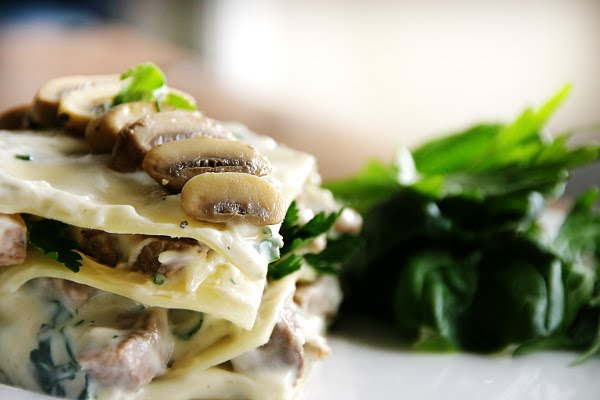Even the best meals are incomplete without something sweet to round them off. I can't seem to finish all three courses at any restaurant, so I've adopted the mains-and-dessert ordering method. It has served me very well and allowed me to enjoy every last bit of my dessert, while others struggle through theirs.
This dish comprises the things i love most in a dessert; dark chocolate, custard, poached fruit and, of course, pastry. Thank you, Tara, Hila, Yuppiechef, EatIn, Pepenero and Ruth Prowse for giving me the opportunity to make yummy chocolaty things! It's really been great being part of the competition. I might even consider maintaining more than just my Tumblr blog...
Sweet Dough Tartlets with Chocolate Orange Crème Pâtissière and Lemon-poached Litchis
For the tartlets (Pâte Sucrée) (This recipe is adapted from another excellent recipe by Michel Roux)
250g flour, sifted
100g butter, cubed and slightly softened
100g icing sugar, sifted
a pinch of salt
2 large free-range eggs, at room temperature
Method:
- Working on a cold surface and out of sunlight, mix the icing sugar, salt and flour together with your fingers and gently rub in the butter with your fingertips until the dough resembles even, grainy crumbs.
- Bring the crumbs together to form a mound and make a well in the centre.
- Place the eggs in the well and work them into the mixture with your fingertips, until the dough starts to come together.
- Once it is uniform in texture, knead the dough with your hands a few times until it is smooth.
- Flatten slightly and cover with plastic wrap, then refrigerate for 1-2 hours before using. If you are really rushed, you can put it in the freezer to firm up the butter faster, but transfer it to the fridge before use, because rock-hard dough is just as useless as melting, soft dough.
- While the dough is in the fridge, make the chocolate orange creme patissiere
For the Chocolate Orange Crème Pâtissière
Peeled zest of two oranges
500ml milk
6 large free range egg yolks
125g castor sugar
40g flour
100g dark chocolate, chopped
Method:
- Heat the milk and orange zest in a small saucepan over a medium heat.
- While the milk is being heated, whisk the egg yolks and sugar in a bowl with a small balloon whisk, then add the flour and whisk until smooth, making sure that there are no lumps or bits of sugar stuck to the bowl.
- As soon as the milk starts to boil, pour 1/3 of it through a sieve (to catch the zest) into the egg mixture and whisk thoroughly.
- Slowly add the rest of the boiling milk, (still catching all the zest with a sieve) and whisk until smooth.
- Pour the mixture back into the pot and return to the heat, stirring continuously with the whisk, making sure it stays in contact with the bottom of the pot.
- Once the mixture starts to boil, whisk until it becomes thick like pudding. This shouldn't take too long over a medium heat.
- Remove from the heat and add the chopped chocolate, continuing to whisk until the custard is an even, dark brown colour and the chocolate is completely melted and incorporated.
- Strain custard though a fine-mesh strainer into a large shallow container. The larger the surface area, the quicker the custard will set. Cover with plastic wrap that touches the surface of the custard to prevent a skin from forming and remember to allow the hot air to escape by leaving a small corner uncovered by plastic.
- Refrigerate until cold and firm.
Baking the tartlets:
- Preheat the oven to 170°C
- Roll the dough out on a flour-dusted work surface to about 3mm thick
- Using a cutter, cut out a circle of dough about 2cm wider than your tartlet pan
- Press the dough into the tartlet pan, making sure the dough makes contact with the full surface of the pan. If it is a fluted pan, use your finger to press the dough into every flute on the side.
- If necessary, trim the excess dough from the sides of the pan with a very sharp knife, angled slightly upwards, rather than down into the tart.
- Pierce the tartlet several times with a fork and refrigerate again to rest the dough.
- Line the tart with baking paper and fill with baking beans
- Blind bake the tart for 10 minutes with the beans, then another 5 minutes without the beans.
- Once they are evenly coloured, remove the pans from the oven and allow to cool slightly before removing the tartlet cases from the pans , then transfer to a wire rack to cool completely.
The tartlets can be filled once completely cooled, or you can store them for a few days in an airtight container. If they become soft, you can reheat them in the oven for a few minutes.
For the lemon-poached litchis
About 240g fresh or canned litchis (fresh is better)
2 TBS castor sugar
1 TBS of water
1tsp grated lemon zest
2 TBS lemon juice
Method:
- Combine sugar, water, lemon zest and juice in a medium-sized saucepan over a moderate heat, stirring constantly until sugar is dissolved.
- Once sugar is dissolved, add the litchis to the pan, reduce the heat and simmer, covered for 10 minutes. The litchis will retain their retain their shape, but will be noticeably softer.
- Before serving, drain the litchis from the poaching liquid and use the lemony liquid to decorate your plate.
Finishing the tartlets
Using a palette knife or a piping bag with a plain nozzle, fill the tartlet with the crème pâtissière and smooth off the top.
Decorate with orange segments or candied orange peel and serve with the syrupy, sweet litchis.







